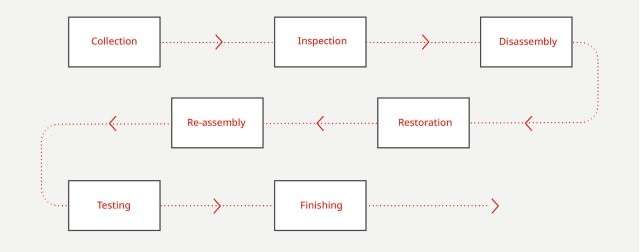As we work towards sustainability goals and extending the life of products, refurbishing is a crucial part of driving the circular economy and returning quality products to market.
These products, such as IT equipment, electrical and electronic office equipment, lighting, and electrical parts, can be restored to a fully functioning state and cycled back into use re-using both older and newer parts. While terms such as refurbished, remanufactured, and re-conditioned are commonly interchanged, there are notable differences between these sustainable approaches to re-commerce.
Refurbished vs. remanufactured
Using a combination of parts (reused, new, repaired), remanufacturing sees the rebuilding of a product. It takes place to restore a product to a like-new quality in both its performance and appearance.
Refurbished products, however, are put through a thorough refurbishment process, with parts and components used to rebuild or repair, to return the product to a satisfactory working condition. While refurbished products don’t come with an as-good-as-new guarantee, you can expect that a refurbished product has been tested to ensure that it will perform well and often comes with a warranty.
Benefits of refurbished products:
- reduced waste
- cost-effective
- great performance
- sustainable.
The circular economy
BSI’s remanufacturer and recondition schemes can verify your processes and assure your clients of best practice. This sustainable approach to the circular economy reduces carbon emissions and will reinforce engagement with international sustainability frameworks. The benefits of a circular economy and enhanced sustainability at a global level include material optimization, new and innovative revenue streams, enhanced stakeholder relationships and brand reputation, and risk mitigation. This emerging market is aimed not only at consumers but also businesses and local and central governments that are looking to encourage sustainability and reduce waste.
BS 8887–240: 2011 The process of reconditioning

The process of returning a used product to a satisfactory working condition by rebuilding or repairing major components that are close to failure, even where there are no reported or apparent faults in those components.








 The process of returning a used product to at least to its original performance with a warranty that is equivalent or better than that of a newly manufactured product.
The process of returning a used product to at least to its original performance with a warranty that is equivalent or better than that of a newly manufactured product.




